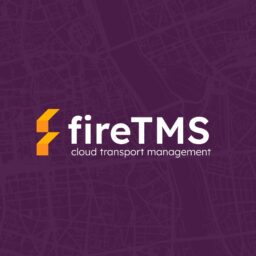In this article, you will learn about the following new features in the fireTMS system:
Scans from GBox and the fireTMS Driver application in PDF format
To meet the expectations of fireTMS users, we have added an option that allows scans sent from the fireTMS Driver application and the GBox advanced telematics system to be saved directly in the system as PDF files.
This feature is disabled by default – you can enable it according to your individual preferences in the system configuration (Configuration >> System configuration).
- fireTMS Driver app: Mobile application tab >> Download documents field >> checkbox Convert documents to PDF if possible.
- Advanced GBox telematics: Transport configuration tab >> Advanced telematics configuration field >> checkbox Convert downloaded documents to PDF, if possible.
Once activated, all new scans will be automatically saved in PDF format.
Automatic saving in PDF format facilitates document archiving and sharing, eliminates manual conversions, and reduces the risk of compatibility issues and format inconsistencies.
Copying recurring costs
Another new feature is the ability to copy recurring costs. To do this, select an existing recurring cost from the list (Vehicles >> Expenses) and select the Create a copy option on the right.
After selecting this option, a form for adding a new recurring expense will open with the data from the source record automatically transferred. All that remains to be filled in is the document number. If necessary, you can edit any data before final approval.
Copying significantly speeds up the addition of similar costs and reduces the risk of errors, as data from an already verified record is used. The consistency of categories and parameters is maintained, while allowing for necessary corrections to be made before saving. This solution works particularly well when entering similar costs for a single vehicle or an entire fleet, where the differences mainly concern the document number.
Extended Activity stream for payments
Until now, we have only recorded selected operations related to a given payment in the payment activity log. In the new version of the system, we have added the missing scenarios – from now on, virtually every operation affecting the payment status leaves a complete trace in its history. This gives users a complete audit trail, allowing them to resolve any discrepancies more quickly and minimise the risk of errors.
New placeholders in debt collection email templates
In order to facilitate debt collection and the handling of overdue receivables, we have added an accounting document number placeholder available in:
- payment reminder templates,
- unpaid payment notification templates.
To use the new tag, go to Configuration >> System configuration >> Printout configuration >> Templates tab and insert the appropriate placeholder in the content or title of the template – the system will automatically replace it with the correct data during sending. The accounting document number can also be visible in the message title.
The new option allows for unambiguous identification of receivables already in the message title, which reduces collection time and limits the number of errors.
New vehicle types – Solo 15t and Solo 18t
The latest addition are two additional vehicle types – Solo 15t and Solo 18t – available in the vehicle characteristics template. They allow for more precise determination of fleet parameters. To assign one of the new types, go to the vehicle file (Vehicles >> Vehicles) and in the Characteristics section, in the Vehicle type field, select the appropriate option.
If you would like to learn more about PDFs from scans, copying recurring costs and other new features, please contact us.
* Some of the features described are only available in selected packages.
Informacje od fireTMS są cenne jak ładunek
Regularnie dostarczamy informacji o naszym systemie oraz na tematy z branży TSL.
Zapisz się do newslettera i bądź na bieżąco.

fireTMS team
The article was written by the fireTMS team, based on their knowledge, experience and awareness of the TSL industry.
